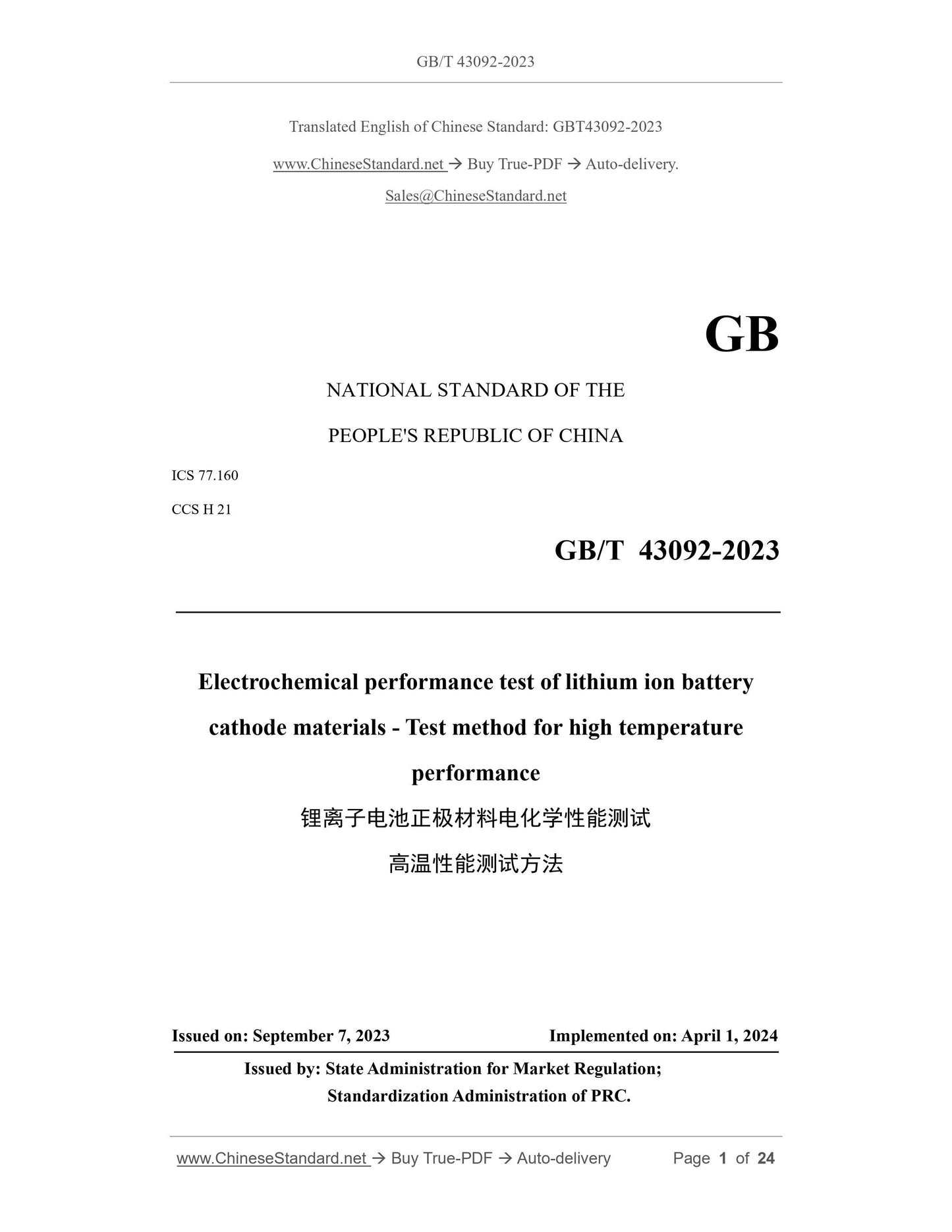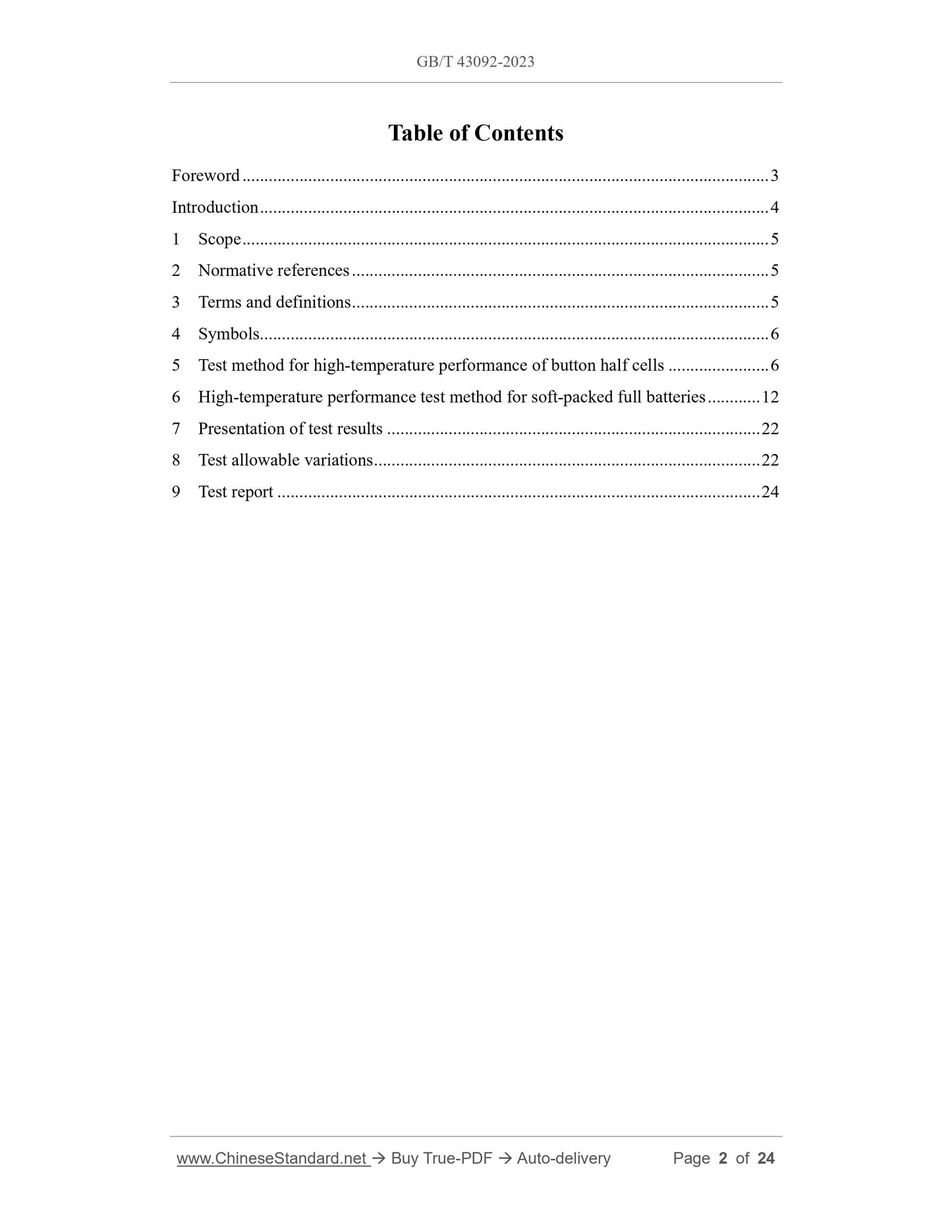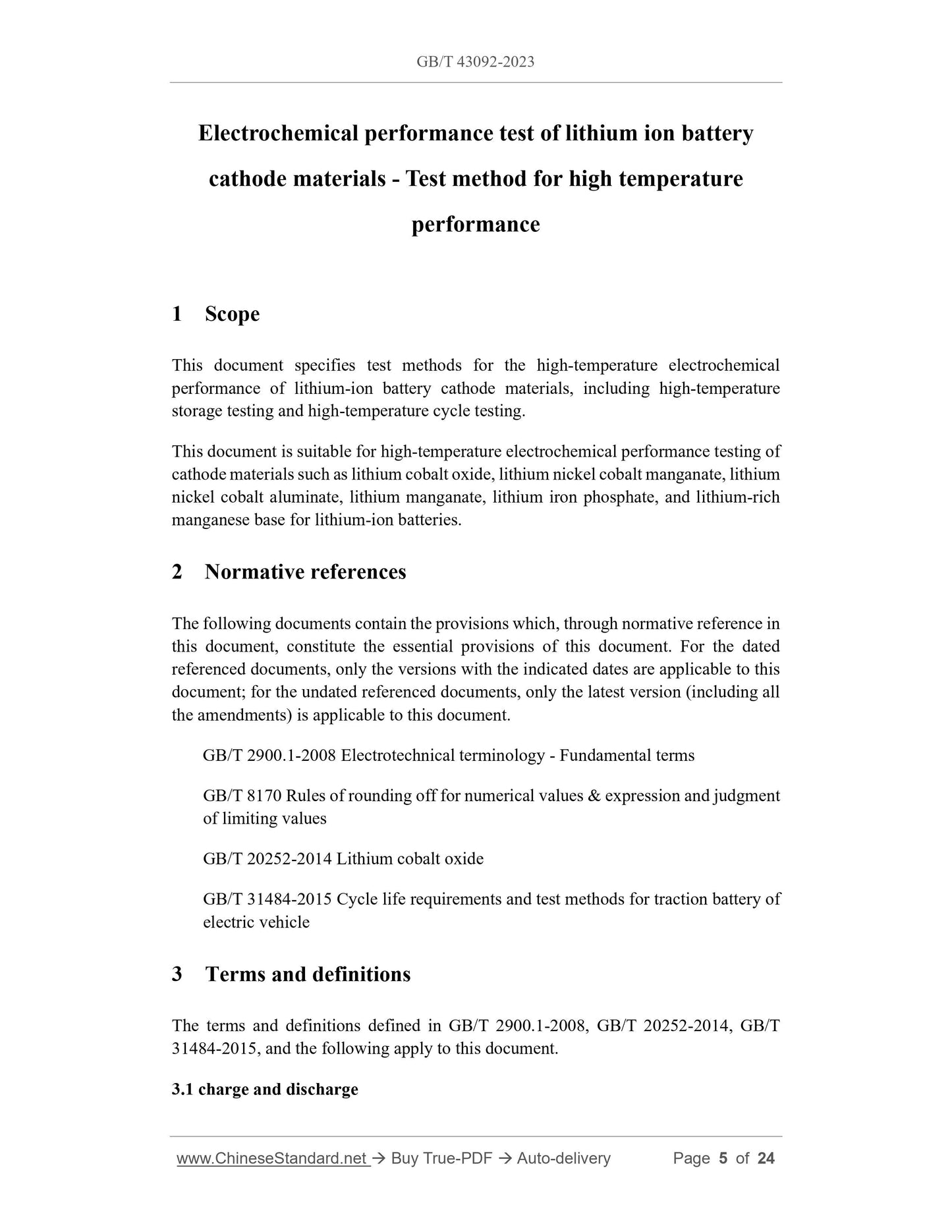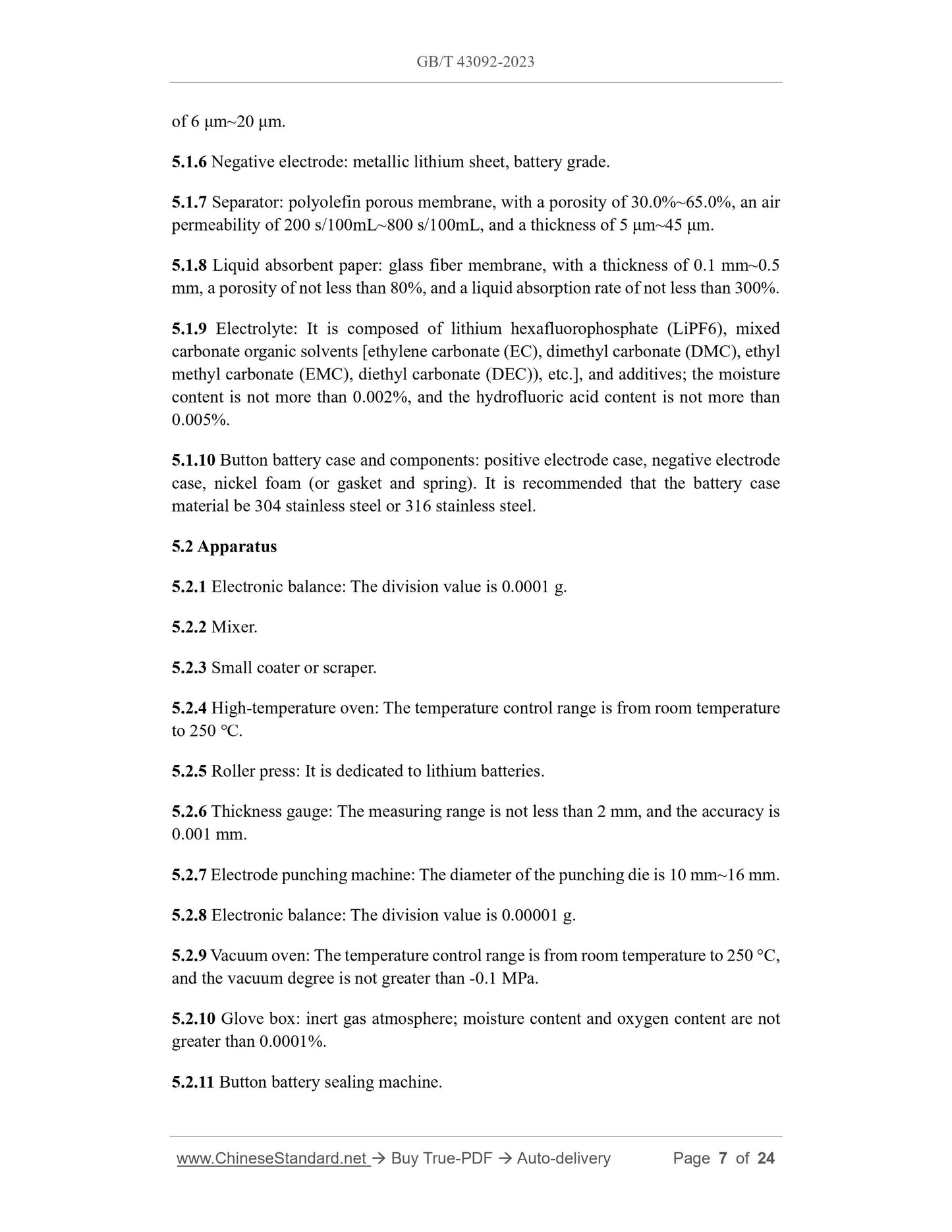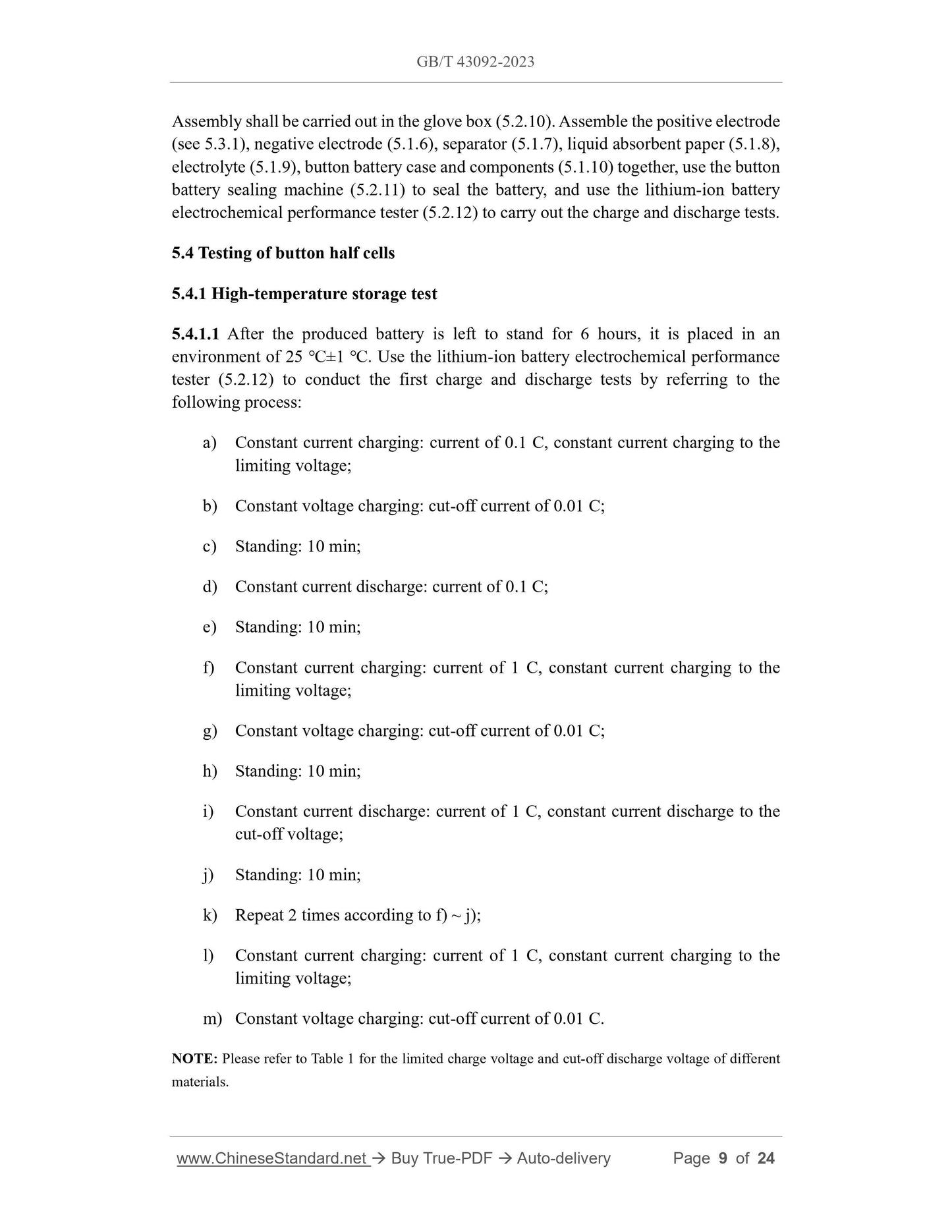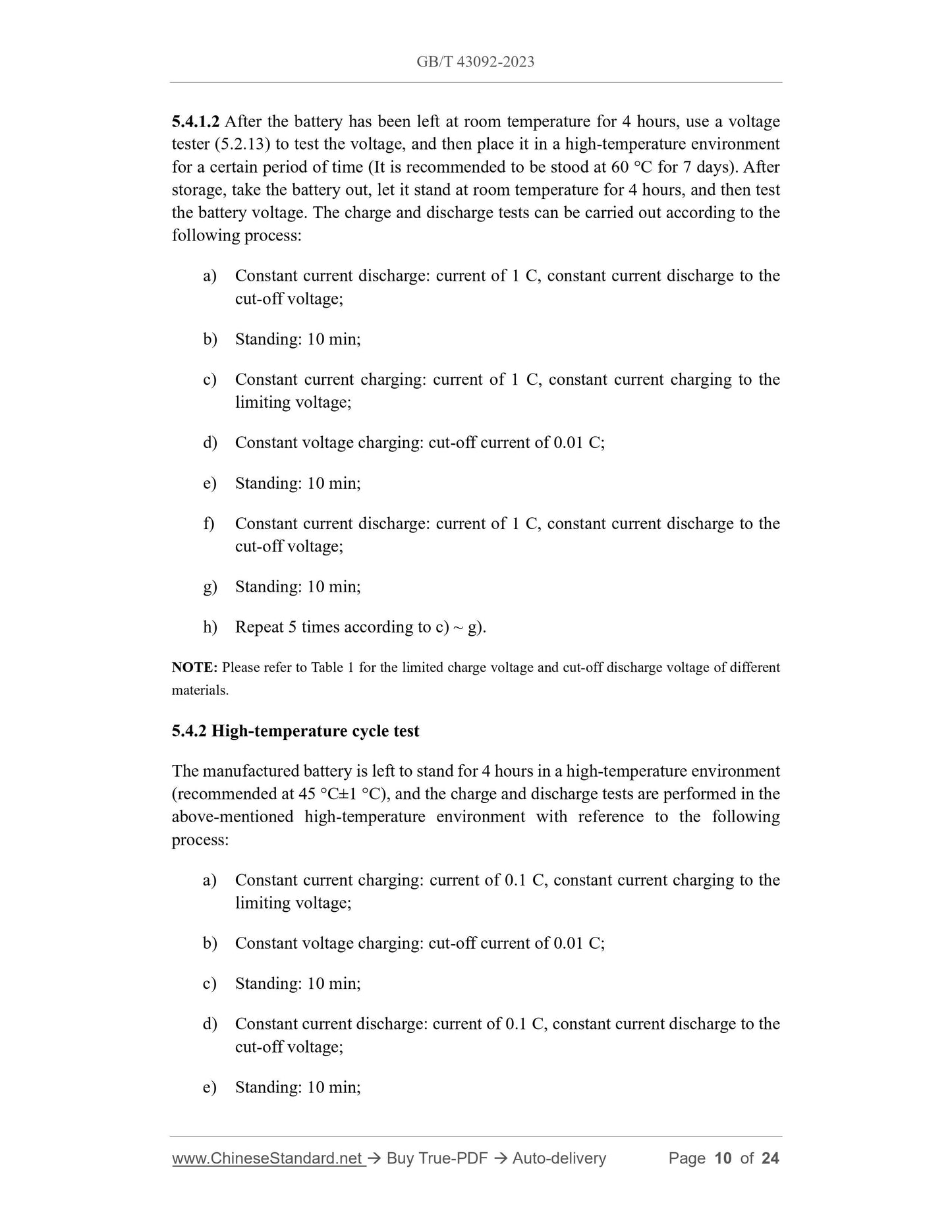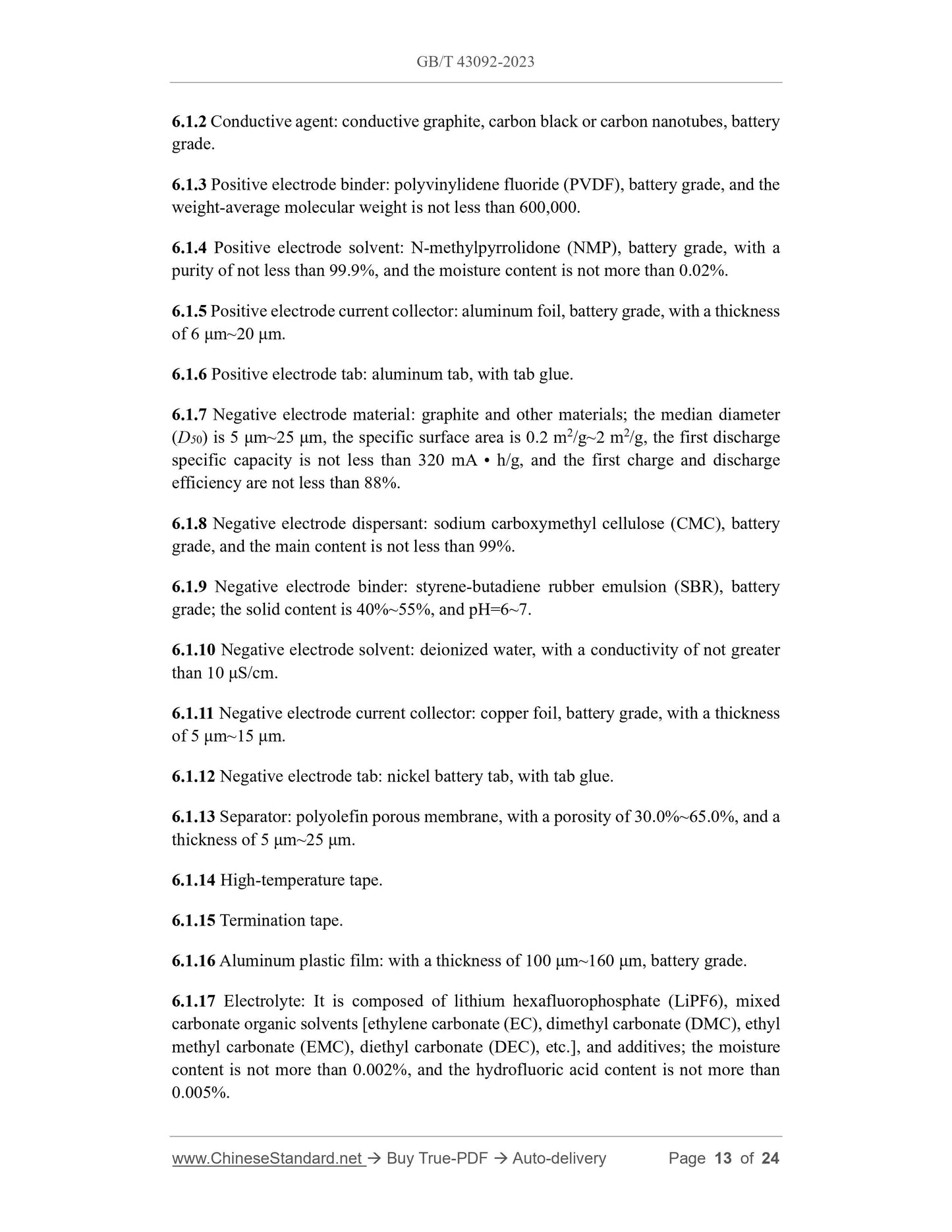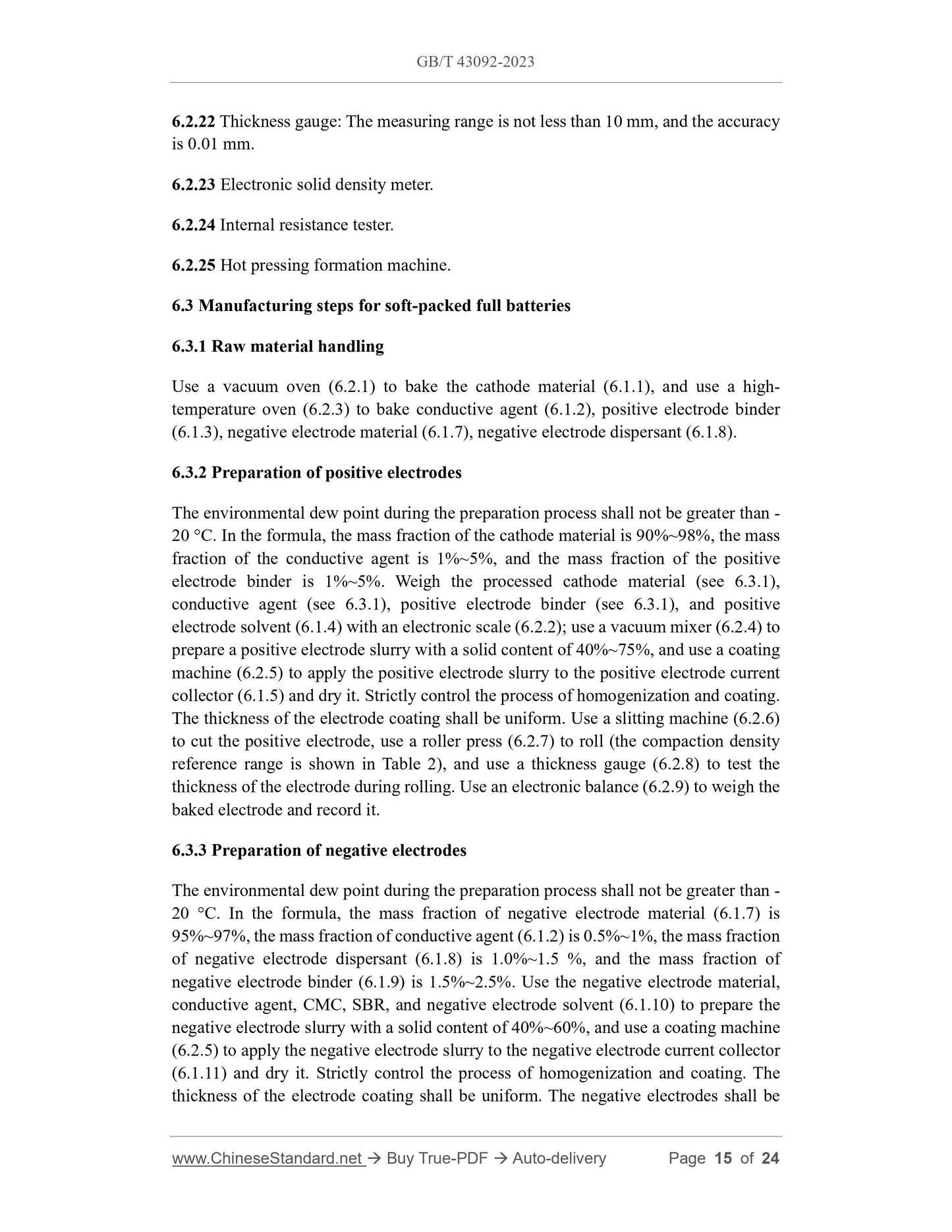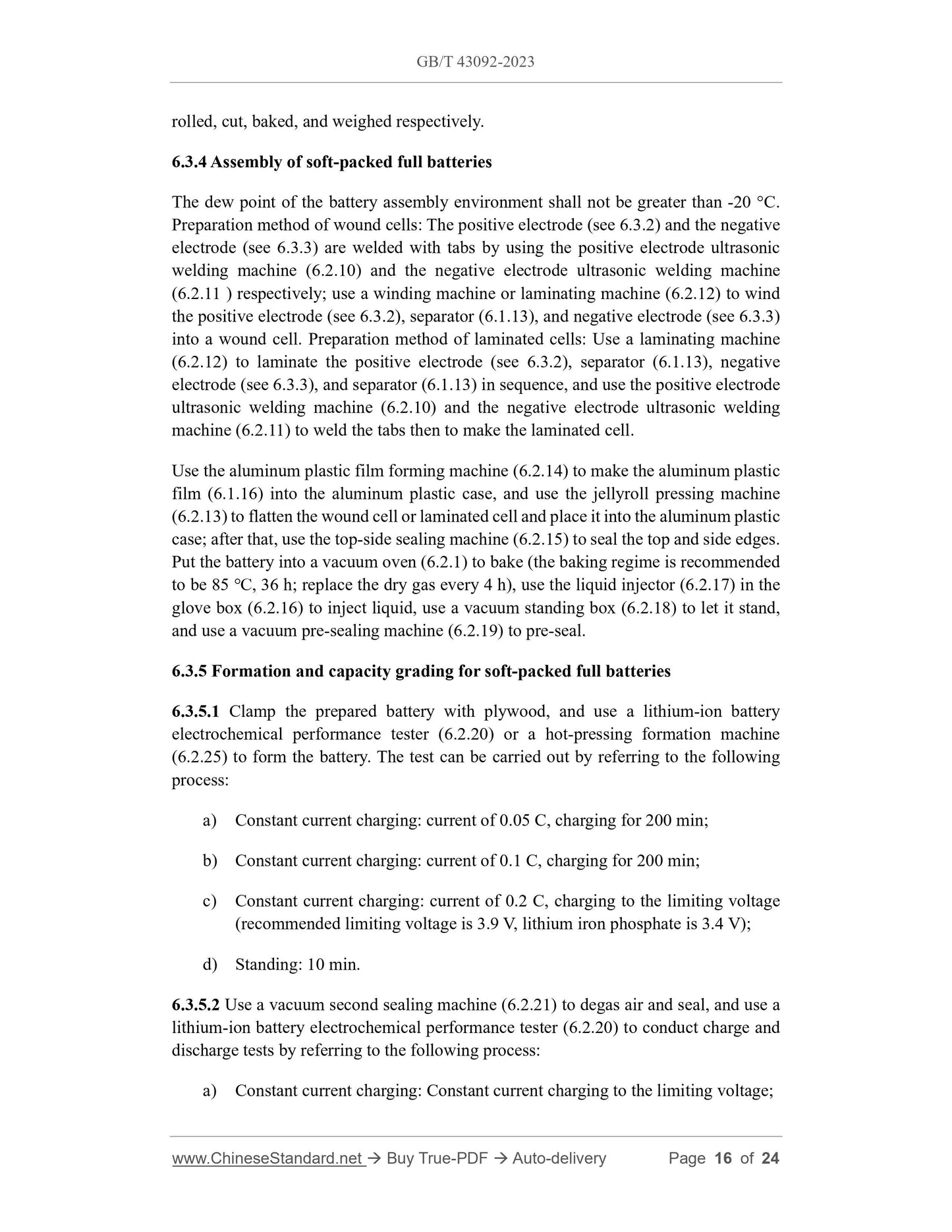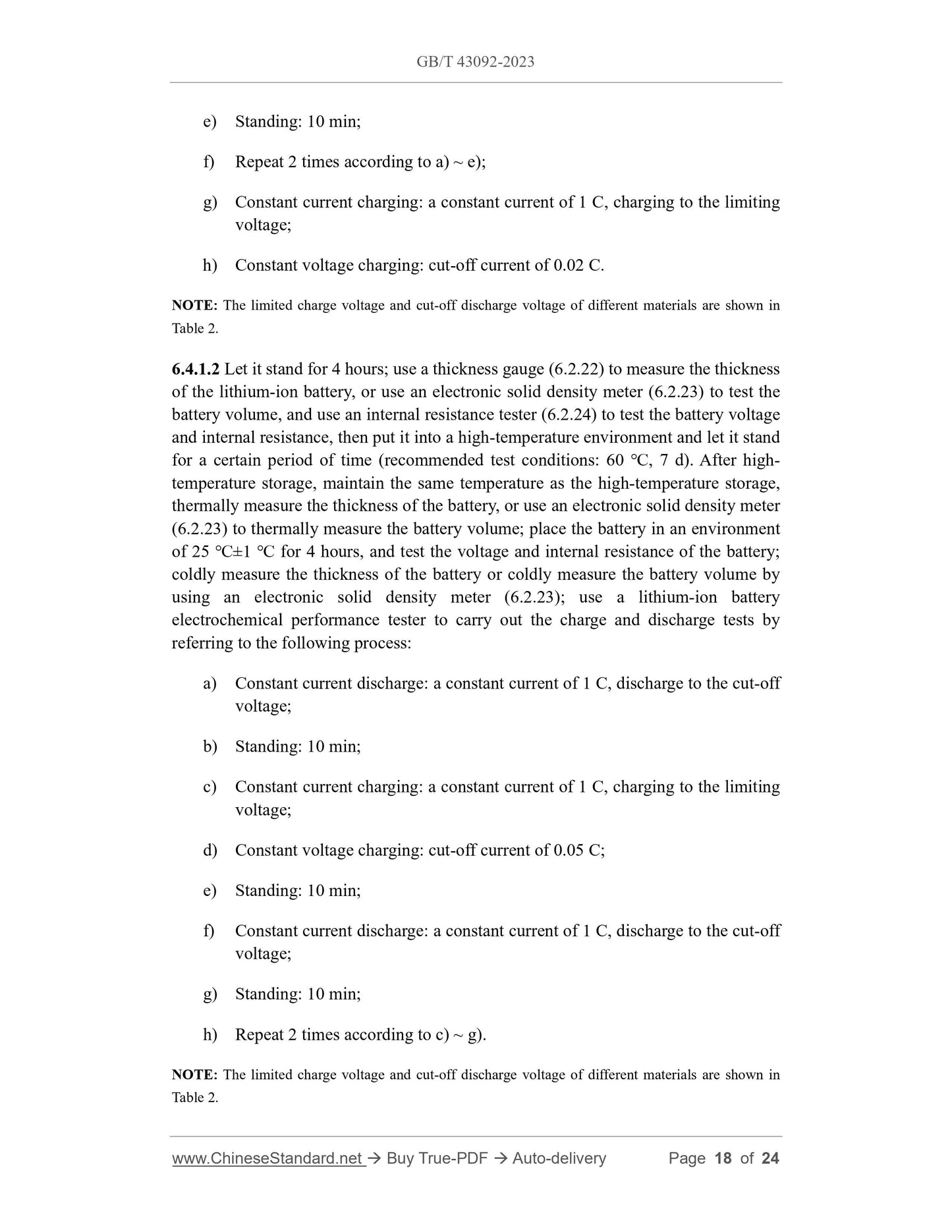1
/
of
10
www.ChineseStandard.us -- Field Test Asia Pte. Ltd.
GB/T 43092-2023 English PDF (GB/T43092-2023)
GB/T 43092-2023 English PDF (GB/T43092-2023)
Regular price
$325.00
Regular price
Sale price
$325.00
Unit price
/
per
Shipping calculated at checkout.
Couldn't load pickup availability
GB/T 43092-2023: Electrochemical performance test of lithium ion battery cathode materials - Test method for high temperature performance
Delivery: 9 seconds. Download (and Email) true-PDF + Invoice.Get Quotation: Click GB/T 43092-2023 (Self-service in 1-minute)
Newer / historical versions: GB/T 43092-2023
Preview True-PDF
Scope
This document specifies test methods for the high-temperature electrochemicalperformance of lithium-ion battery cathode materials, including high-temperature
storage testing and high-temperature cycle testing.
This document is suitable for high-temperature electrochemical performance testing of
cathode materials such as lithium cobalt oxide, lithium nickel cobalt manganate, lithium
nickel cobalt aluminate, lithium manganate, lithium iron phosphate, and lithium-rich
manganese base for lithium-ion batteries.
Basic Data
| Standard ID | GB/T 43092-2023 (GB/T43092-2023) |
| Description (Translated English) | Electrochemical performance test of lithium ion battery cathode materials - Test method for high temperature performance |
| Sector / Industry | National Standard (Recommended) |
| Classification of Chinese Standard | H21 |
| Classification of International Standard | 77.160 |
| Word Count Estimation | 18,115 |
| Date of Issue | 2023-09-07 |
| Date of Implementation | 2024-04-01 |
| Issuing agency(ies) | State Administration for Market Regulation, China National Standardization Administration |
Share
